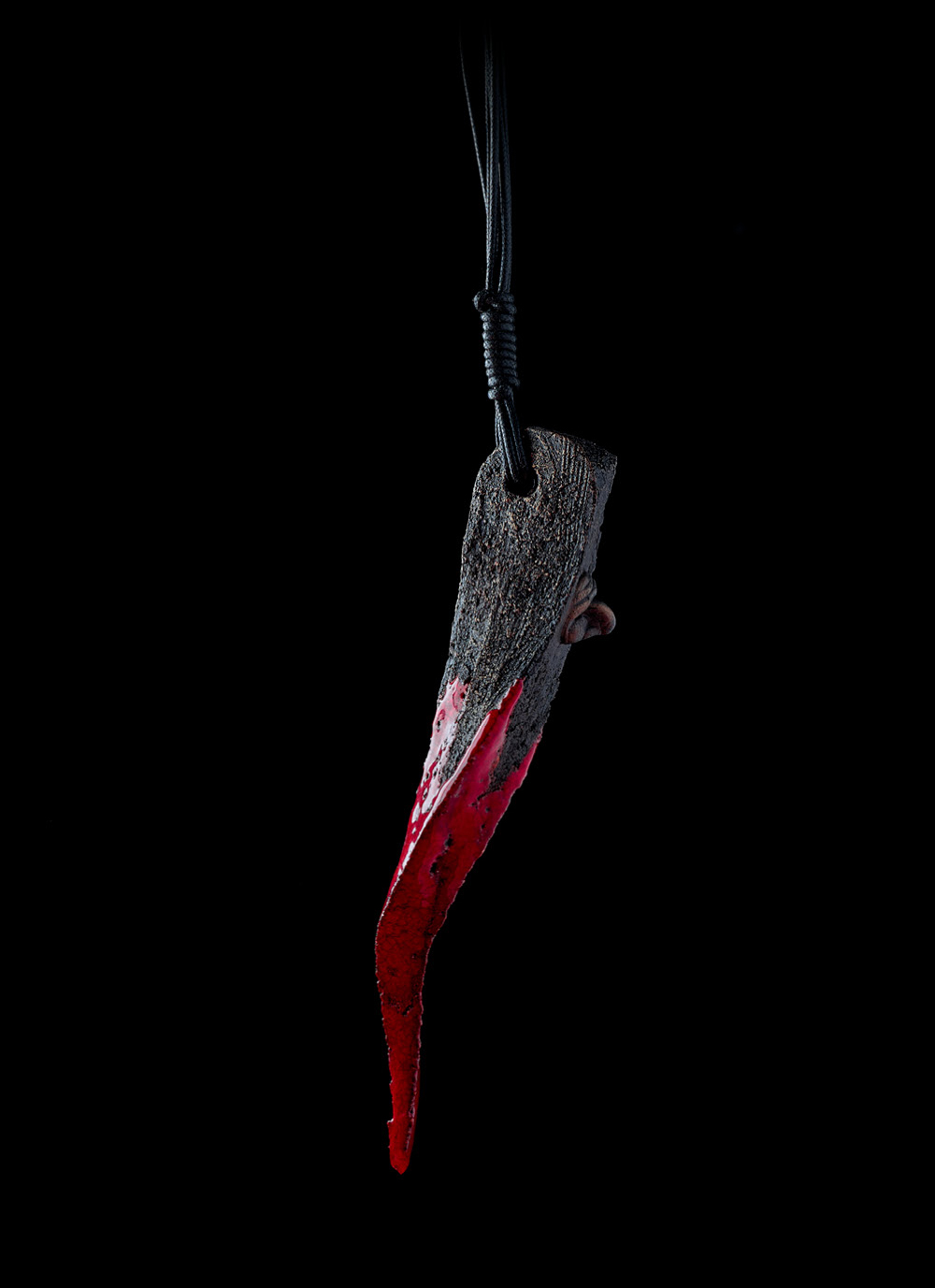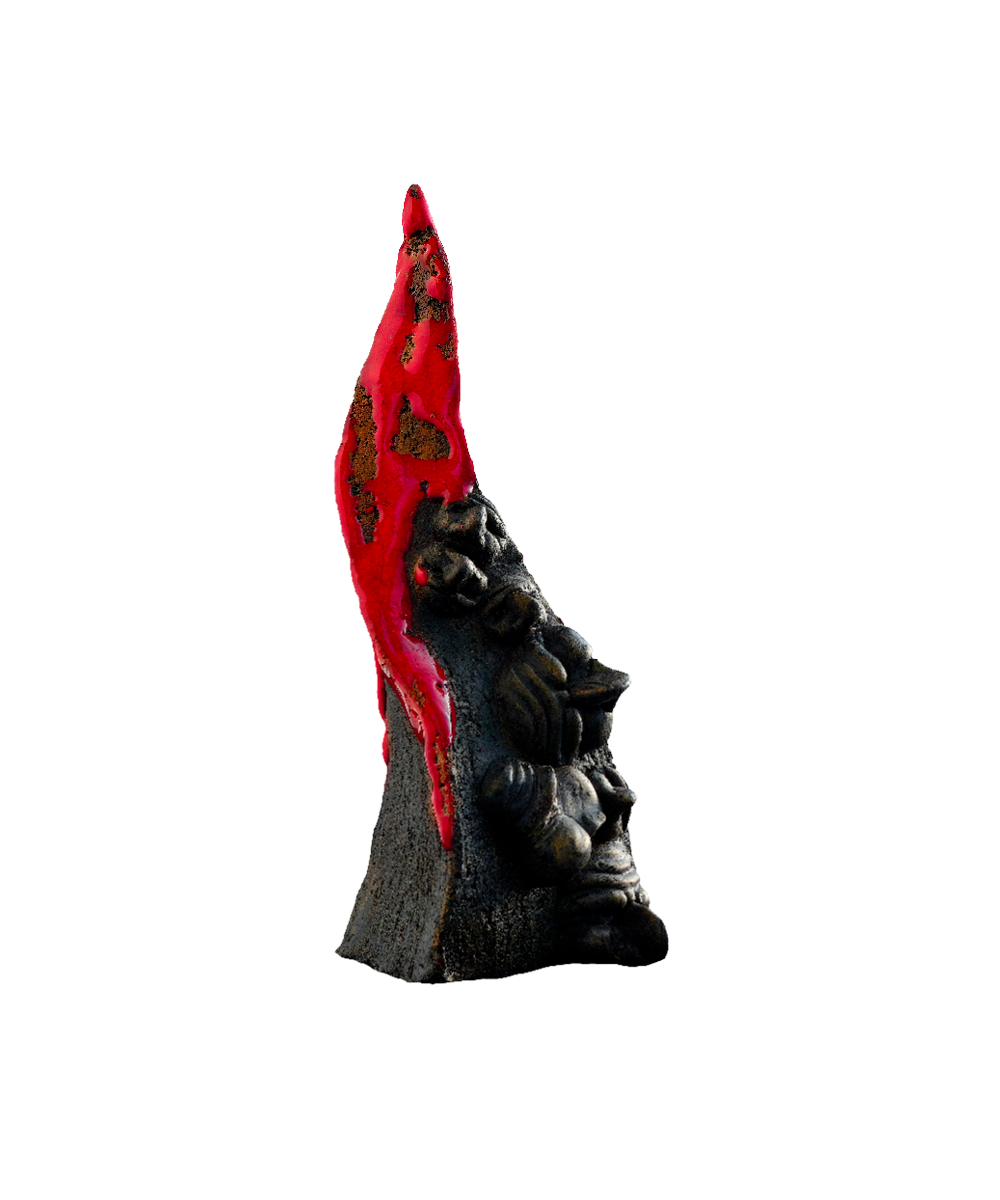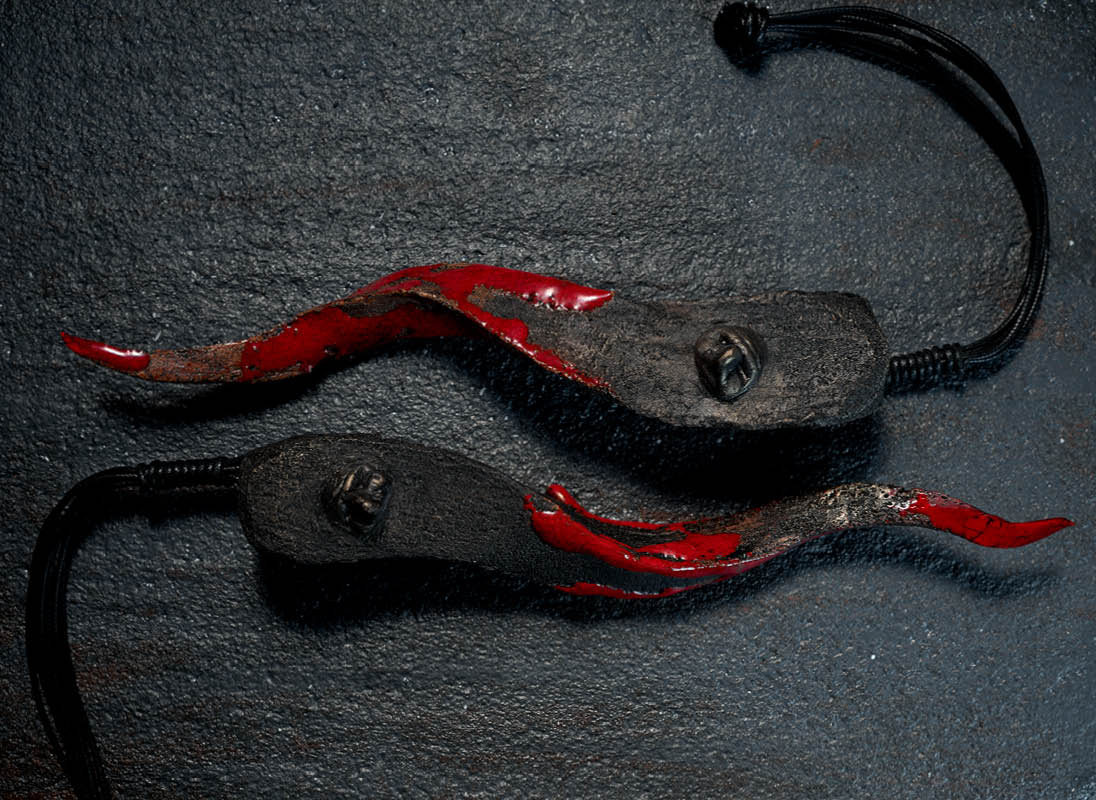the Horn

Who among us
has never touched an amulet or uttered a somewhat weird phrase to ward off negativity? They are gestures and attitudes whose origins are lost in the mists of time. In ancient Greece women wore a small terracotta phallus, a symbol of fertility in honor of the god Priapus. This object was brought by the Romans in Italy, where due to a sort of censorship took on a less allusive form, transforming itself in to an animal horn. Later the Neapolitan people adopted the horn as a propitiatory and auspicious object to the point of making it a symbol of the Neapolitan identity. The horn had to have three characteristics: handmade, in terracotta, red in color.
Even today every Neapolitan, as a joke or conviction, touches the horn to drive away the negativities and ward off the evil eye. Hence the idea of creating a revisitation of the horn, to which I wanted to give an additional meaning: in compliance with the inevitable three rules, on one hand I gave the horn the shape of the nail of the Passion of Christ, in black lava stone and red clay like blood flowing under our feet, on the other hand I enriched it with the mask of Pulcinella, a character from the commedia dell’arte that represents one of the most superstitious figures ever.


This
contradiction should not surprise us.
The combination of the sacread and profane is recurrent in Naples, it is part of its cultural identity, just think of the “Obelisk of Saint Gennaro”, formed by a spire on the top of which stands the statue of Saint Gennaro and a base in which the Mermaid Parthenope appears. After all, the Naples we love is also this, a complex of contradictions between opposing concepts that melt together in matter and shapes, but that narrate authentically the ancient Neapolitan spirit.

This contradiction should not surprise us.
The combination of the sacread and profane is recurrent in Naples, it is part of its cultural identity, just think of the “Obelisk of Saint Gennaro”, formed by a spire on the top of which stands the statue of Saint Gennaro and a base in which the Mermaid Parthenope appears. After all, the Naples we love is also this, a complex of contradictions between opposing concepts that melt together in matter and shapes, but that narrate authentically the ancient Neapolitan spirit.

